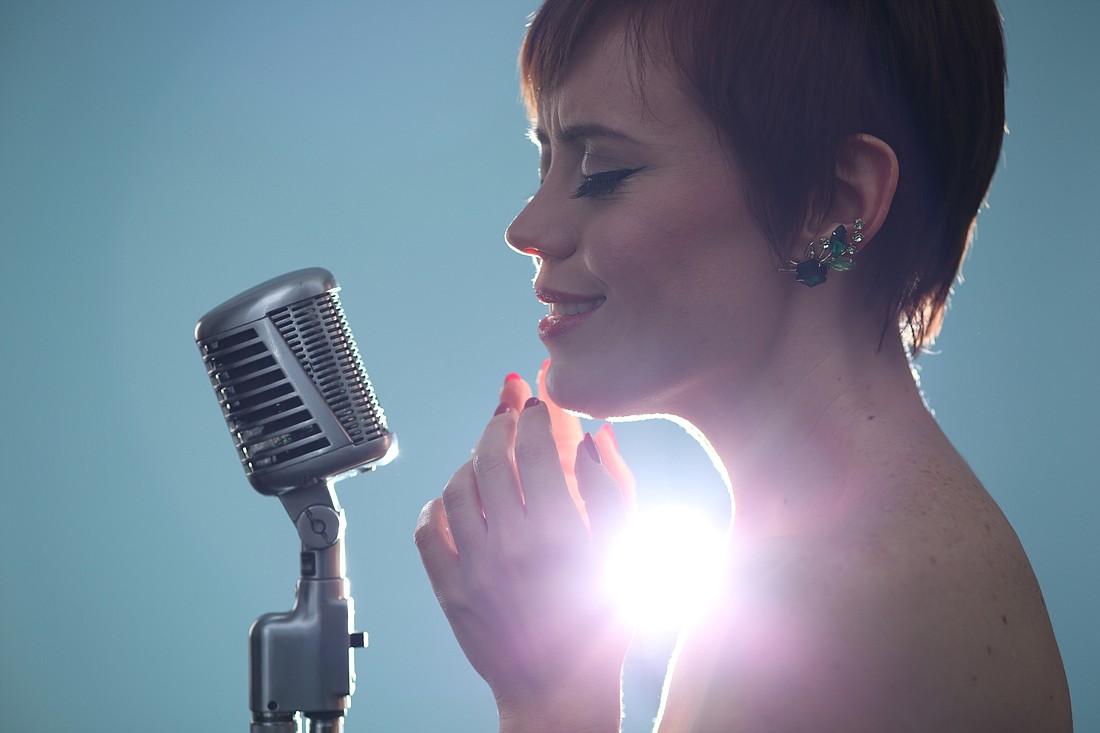- November 23, 2024
-
-
Loading

Loading

Remember the Jazz Age? Neither do I. But “Roar! The Music of the 1920s and Beyond” offers an excellent substitute at Florida Studio Theatre. I say this with great authority, based on multiple viewings of “Boardwalk Empire,” “The Untouchables” and “The Great Gatsby.”
That jazzy music roars again thanks to a powerhouse band. Michael Masci (the show’s music director) propels the piano; Tony Bruno drives the drums; Keith Greene wails away at the trumpet; Kroy Presley makes the upright bass sing. All top talents. But Carole Bufford is clearly the star of the show. She has a lithe, elfin stage presence and sings like a dream.
And she’s no slouch in the research department, either. The green-eyed lady spent countless hours absorbing film clips, recordings and old articles — including a snobby (and blatantly racist) screed from “The Ladies Home Journal” in 1921 on the threat jazz poses to Western Civilization and all things holy.
After making the scene in a flapper gown and bob haircut, Bufford shares the quote. We learn that, “Jazz originally was the accompaniment of the voodoo dancer, stimulating the half-crazed barbarian to the vilest deeds.”
Bufford then proceeds to jazz things up. (No vile deeds ensued.)
It’s an entertaining song selection, with sparkling arrangements, all by Bufford. Her Jazz Age hits offer a woman’s point of view on the Rubik’s Cube permutations of love, lust, loss, longing and rejection.
“All of Me” sings of lost love; “Are You Lonesome Tonight” cries for connection (and would give Elvis a monster hit decades later); “You’ve Got The Right Key (But The Wrong Keyhole)” is a raunchy, hilarious double entendre about a woman who changes her locks because the man outside just doesn’t, uh, fit; “I Wonder Where My Sweet, Sweet Daddy’s Gone” (1921) sighs with longing; “It Makes My Love Come Down” moans with carnal fulfillment; “Ten Cents a Dance” offers the sales pitch of a burned-out taxi dancer; “Gimme a Pigfoot (And a Bottle of Beer)” celebrates life with a lusty hoot and holler; “A Hundred Years from Today” puts life in philosophical perspective. (A century from now, you’ll be dead. Be happy while you can.)
Bufford sprinkles her golden oldies with anecdotal gold — stories both funny and sad.
A dance craze called "Toddling" once swept the nation. When Belle Baker first sang “All of Me,” she was pouring out her grief to a packed house and thousands of radio listeners. She’d just found out her husband had died.
These history lessons emerge organically. Bufford’s charismatic performance is organic, as well. Doubtlessly thanks to all that research, she captures the period’s dance moves and vocal styles. That alone could be empty nostalgia and soulless imitation.
But Bufford’s performance is something more.
That “something” is hard to pin down, but I’ll try.
What she does is clearly a form of acting. Bufford creates character with every song she sings. No dead-on imitation of dead singers, though. No pseudo Sophie Tuckers or bogus Billie Holidays. The performance is hers, and only hers. That’s what gives it soul.
If Bufford had hit her prime in the 1920s and ’30s, this is exactly how she’d sing. She’s not imitating the past; she’s living it. When Bufford’s up there on stage, the Jazz Age is present tense.
At times during her performance, that’s exactly how it feels.